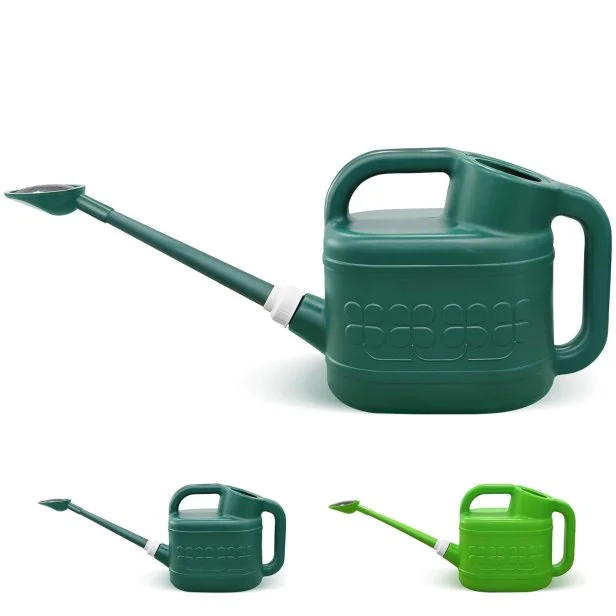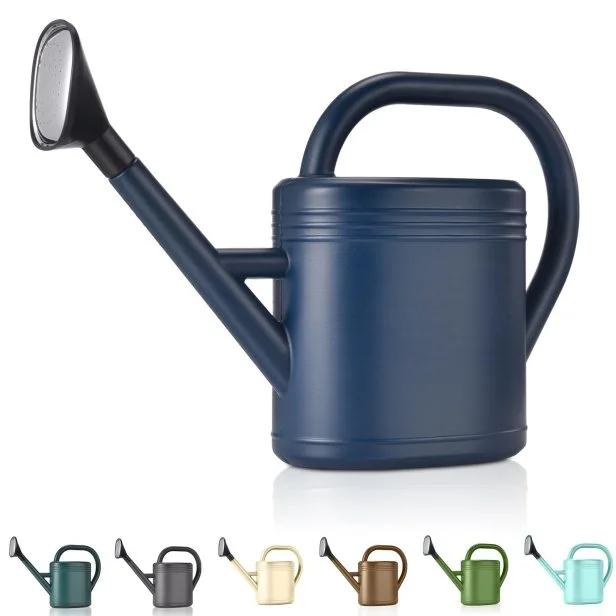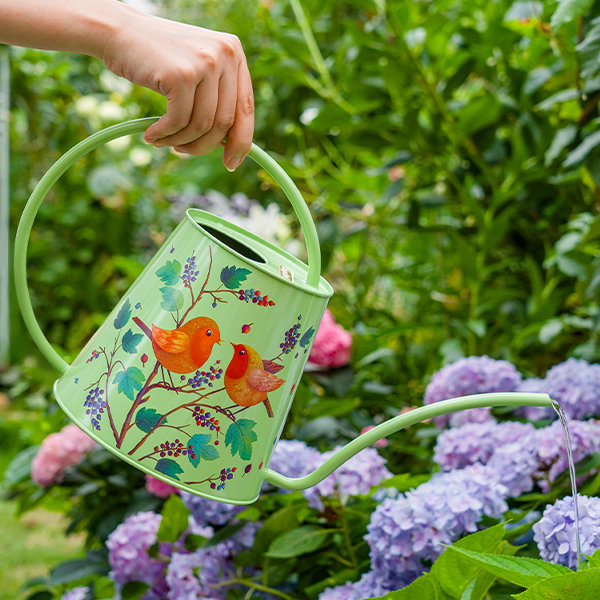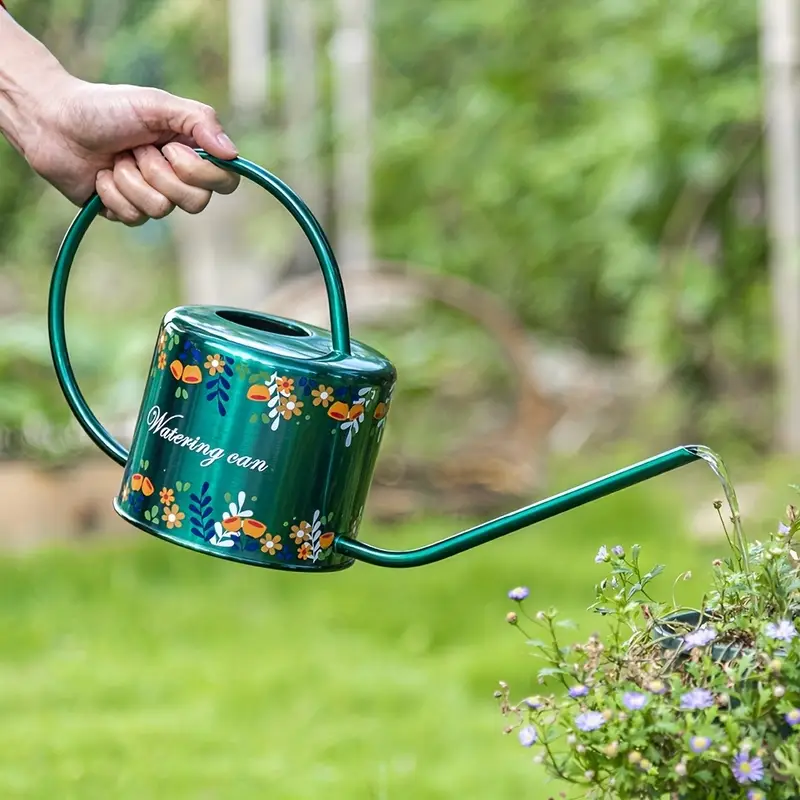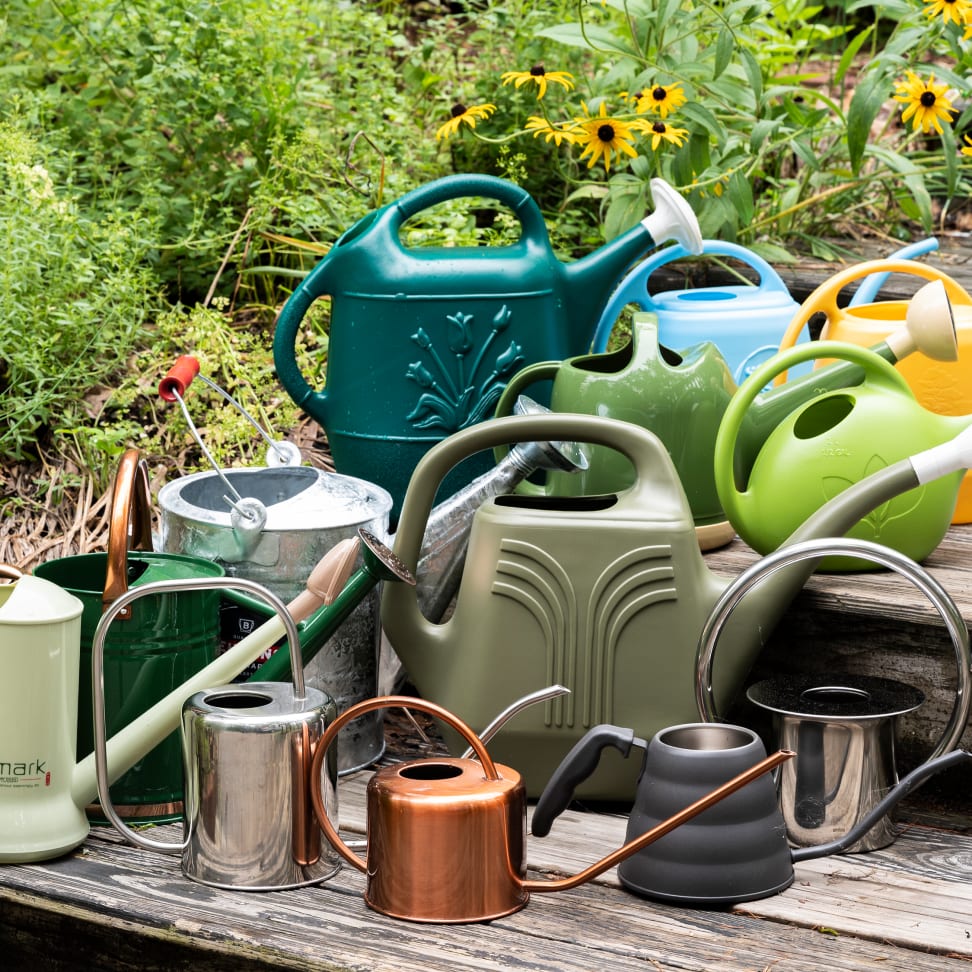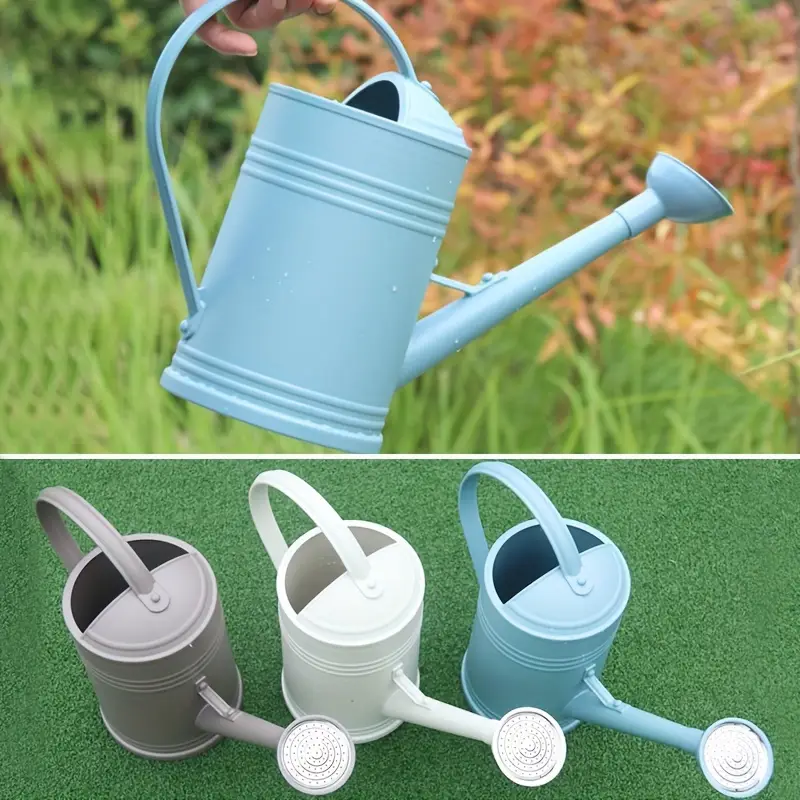
Reliable Tools: Maximizing Efficiency with a 5 Gallon Watering Can
The Basics of a 5 Gallon Watering Can
Gardening requires reliable tools, and a 5 gallon watering can is essential. With this size, it’s possible to hydrate a large number of plants without refilling often. Knowing the basics of this handy tool will enhance your gardening routine.
Firstly, its capacity allows for a significant amount of water, making it ideal for bigger gardens. It’s crucial to select a can that has a strong handle. This ensures you can manage the weight when it’s full. A durable spout is also important. It directs the water flow and prevents spills.
Most 5 gallon cans come in either plastic or metal. Plastic models are lighter and generally less expensive. However, metal cans often last longer and can withstand more wear and tear.
The design of your watering can should include a comfortable grip and balance. This is vital when carrying it across your garden. Some cans have additional features like adjustable nozzles or removable heads to control water flow. These can help target specific areas or distribute water more evenly.
In summary, knowing the basics of a 5 gallon watering can sets you up for gardening success. Look for strong handles, a sturdy spout, and a design that offers comfort and balance. Deciding between plastic or metal will depend on personal preference and your garden’s needs.
Selecting the Right 5 Gallon Watering Can for Your Garden
Choosing the ideal 5 gallon watering can for your garden is a thoughtful process. Here are key factors to consider:
- Material: Decide between plastic and metal. Plastic is lighter and may be easier to lift when full. Metal is sturdier and can handle more use over time.
- Handle Strength: Ensure the handle is robust enough to support a full can’s weight. A weak handle can break and cause spills.
- Spout Design: Look for a spout that offers precise watering. A long spout can reach plants further away, and a spout with a rose (sprinkler head) is great for gentle watering.
- Comfort and Balance: Make sure the watering can feels comfortable in your hand. Check that it balances well when filled, reducing strain on your arms.
- Capacity Indicators: Some cans have clear markings showing volume levels. These can help prevent overfilling and make mixing fertilizers precise.
- Extra Features: Adjustable nozzles or detachable heads can offer versatility in watering methods. These are beneficial for gardens with diverse plant types.
When selecting your 5 gallon watering can, balance practicality with your garden’s specific needs. A right choice minimizes effort and maximizes plant health. Keep these considerations in mind to find a watering can that becomes an asset to your gardening tasks.
Benefits of Using a 5 Gallon Watering Can in Gardening
Using a 5 gallon watering can provides numerous benefits that are well worth considering. Here’s why this size is advantageous for gardeners:
- Reduces Refilling Frequency: A larger capacity means less time spent going back and forth to refill, allowing you to water more plants quickly.
- Supports Deep Watering: With more water on hand, you can give each plant a thorough soak necessary for deep root growth.
- Enhances Time Efficiency: By reducing the need for multiple trips to a water source, you save time that can be used for other gardening tasks.
- Ideal for Larger Gardens: If you have a big garden area, a 5 gallon watering can is perfect for covering more ground without needing a hose.
- Promotes Consistent Watering: The ample size helps ensure all your plants receive the same amount of water, which is crucial for even growth.
- Useful for Mixing Fertilizers: When adding nutrients, the large volume allows for consistent fertilizer distribution.
- Physically Easier: Despite its size, when properly filled and carried, it can be more ergonomic than smaller, more frequently filled cans.
By investing in a 5 gallon watering can, you provide your garden with consistent and efficient watering, facilitating healthier plant life and saving you time in your gardening routine.
Tips for Filling and Carrying a 5 Gallon Watering Can
Using a 5 gallon watering can simplifies your gardening, but it comes with challenges. Here are tips to fill and carry it safely and efficiently.
- Start with Half: When new to using a large can, start with half. It’s easier to handle and gives you a feel for the weight.
- Use a Hose: Fill your can with a hose. It’s quick and prevents spills.
- Smooth Lift: Bend your knees and lift with your legs. Keep the can close to your body to avoid back strain.
- Two Hands: Always use both hands. One on the handle and the other supports the bottom.
- Take Breaks: If you feel tired, take a break. Set the can down gently to rest.
- Steady Pace: Walk slowly. A steady pace helps you balance and avoids water sloshing out.
- Rotate Arms: If one arm gets tired, switch hands. It helps distribute the weight evenly.
By following these tips, you can manage a 5 gallon watering can with ease. It’s about maintaining control and being mindful of your body’s comfort. Happy gardening!
Efficient Watering Techniques with a 5 Gallon Can
Maximizing your watering efforts with a 5 gallon watering can involves more than just filling and pouring. Applying water efficiently ensures your plants get the moisture they need without waste. Here are some effective techniques to optimize your garden’s watering routine:
- Target the Roots: Focus on the base of the plant where the roots are. This directs water precisely where needed. Avoid wetting the foliage to reduce disease risk.
- Water Early or Late: Evaporation is less during the cooler hours. Watering in the early morning or evening gives plants time to absorb moisture.
- Use a Rose Attachment: Attaching a rose to your can’s spout breaks the stream into droplets. This provides a gentle shower, perfect for seedlings and delicate plants.
- Consistent Pattern: Establish a watering pattern. Start at one end of your garden and work systematically to the other. This helps you remember which plants you’ve watered.
- Soak, Don’t Sprinkle: Give plants a deep soak rather than a light sprinkle. This encourages deeper root growth and drought tolerance.
- Mulch the Base: After watering, mulch around the base of your plants. Mulch helps maintain soil moisture and temperature.
- Watch the Weather: If rain is in the forecast, you might skip watering. Too much moisture could harm plants or wash away nutrients.
By using these efficient watering techniques, you’re on your way to nurturing a thriving garden with your 5 gallon watering can. Practice these tips for best results, and watch your garden flourish with health and vigor.
Maintaining Your 5 Gallon Watering Can for Longevity
To keep your 5 gallon watering can in top shape, maintenance is key. Here are simple yet effective ways to ensure its longevity:
- Regular Cleaning: After each use, rinse your can with clean water. This prevents dirt buildup and clogs.
- Inspect for Damage: Look for any signs of wear, like cracks or rust. Fix small issues before they get worse.
- Store Properly: Keep your can in a shaded, dry place. Exposure to harsh weather can degrade materials.
- Handle with Care: Carry your can correctly to avoid straining the handle. Use both hands and don’t drag it on the ground.
- Avoid Chemicals: If you mix fertilizers, flush the can afterward. Chemical residues can corrode metal or damage plastic over time.
- Periodic Replacement Parts: If you have a can with a removable spout or rose, replace these parts when they show wear.
By following these straightforward tips, your 5 gallon watering can will remain a dependable tool for many seasons.
Innovative Accessories for Your 5 Gallon Watering Can
To enhance your gardening with a 5 gallon watering can, bring in innovative accessories. These add-ons can save time and tailor the watering experience to your garden’s needs.
- Timers and Sensors: Attach a timer to your can for a more controlled watering schedule. Moisture sensors help you water only when plants need it, preventing overwatering.
- Water Level Indicator: A clear gauge can show how much water is left. You won’t have to guess or open the can to check.
- Ergonomic Handles: Upgrade to an ergonomic handle for better grip and comfort. This helps when carrying a full can across the garden.
- Can Caddies or Trolleys: These wheeled platforms make it easier to move a full can without lifting, saving your back.
- Water Filters: If you use rainwater, a filter can remove debris and keep the water clean for your plants.
- Longer Spouts: They extend your reach and can water hard-to-access plants with ease.
Invest in these smart accessories for your 5 gallon watering can. They can upgrade your gardening routine, making it more efficient and enjoyable. Happy gardening!
Environmental Advantages of Using Large-Capacity Watering Cans
Large-capacity watering cans, like the 5 gallon variety, offer environmental benefits that align with sustainable gardening practices. Here are some ways they contribute to environmental conservation:
- Less Water Wastage: By carrying more water per trip, you minimize wastage from spills. Less water is lost to runoff or evaporation as you move between sources and plants.
- Reduction in Plastic Use: If you use a metal 5 gallon watering can, it may last longer than plastic ones, reducing the need for replacements and, hence, plastic waste.
- Energy Savings: Filling a watering can less frequently requires less energy. This can mean less fuel or electricity is used if you use a powered water source.
- Encourages Rainwater Harvesting: A larger can is ideal for collecting rainwater, a sustainable and environmentally-friendly source. This practice conserves treated tap water and can improve plant health.
- Promotes Healthier Plant Growth: Deep watering supports strong root systems, which can reduce the need for chemical fertilizers and pesticides. Healthier plants also contribute to a better ecosystem.
- Supports Drought-Resilient Gardens: By encouraging deep watering techniques, large watering cans help plants adapt to drought conditions, which is crucial in areas with water scarcity.
By making thoughtful choices, such as using a 5 gallon watering can, gardeners can positively impact the environment while nurturing their gardens.
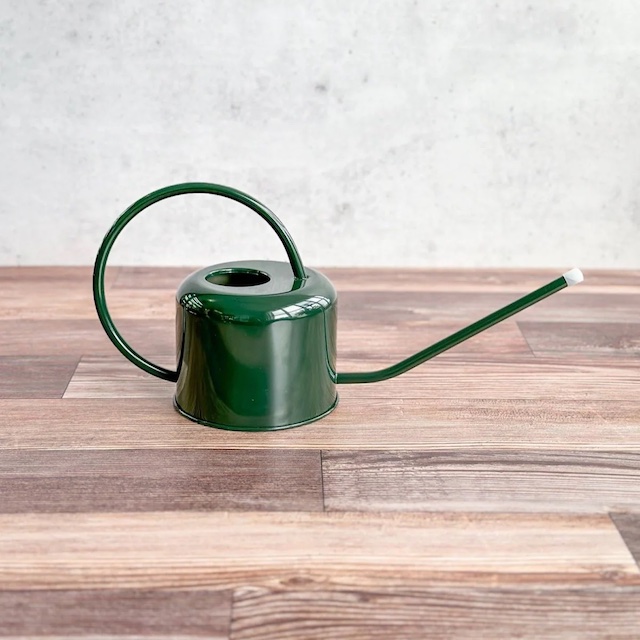
Maximize Plant Health: Long Spout Watering Can Tips
Choosing the Right Long Spout Watering Can
Selecting an ideal long spout watering can is key to your success in gardening. A well-chosen can makes watering simple and efficient. It delivers water to the plants without excess spillage and ensures that every drop is useful. Here are critical factors to consider and material options for your long spout watering can.
Factors to Consider When Selecting a Watering Can
Before picking a long spout watering can, reflect on its size, weight, balance, and spout length. A larger can holds more water but becomes heavy when full. Find a balanced can for comfortable handling. The spout should be long enough to reach your plants easily. Evaluate its handle, too. A comfortable grip reduces strain on your hand and wrist.
Consider the watering can’s capacity. A capacity that suits your garden size means fewer refills. The spout design matters as well. A narrow spout offers precision in watering young or delicate plants, while a wider spout suits larger plants.
Lastly, ponder over durability and cost. Well-built watering cans last longer but may cost more. Choose one that fits your budget yet doesn’t compromise on quality.
Material Choices for Long Spout Watering Cans
The material of your long spout watering can affects longevity, weight, and aesthetics. Common materials include metal, plastic, and ceramic.
Metal cans are sturdy and last a long time. They can be heavy but are great for durability. Plastic cans are lightweight and often cheaper. They come in various colors and designs. However, they may not endure as long as metal cans. Ceramic cans are beautiful and can complement your garden’s look. They are usually heavier and fragile, so they require careful handling.
When you weigh these factors and material options, you can find a long spout watering can that caters to both your garden’s needs and personal preferences.
Benefits of a Long Spout Watering Can
A long spout watering can provides many benefits for gardeners and plant enthusiasts. Its design enhances the watering process, making it not only easier but also more productive for plant health.
Reach and Accuracy in Watering
A long spout on a watering can gives you the ability to reach plants that are far away, or nestled among other foliage without the need to stretch or step into your flowerbeds. This means less trampling and damage to other plants in your quest to water those at the back. Accuracy is another major benefit; a long spout allows for a targeted stream of water, ensuring that you can water the base of each plant directly. This precise aim helps to avoid wetting the foliage unnecessarily, which can reduce the risk of disease in many plants.
Minimizing Water Waste
The careful control you have with a long spout watering can helps in minimizing water waste. With the capability to direct water exactly where needed, you’re less likely to spill or use more water than your plants require. Overwatering not only harms plants but also wastes water. The long spout’s design helps conserve water by allowing a slow and steady stream, soaking the soil thoroughly but gradually, which reduces runoff. Adopting these practices is not only good for your plants but is also a step towards sustainable gardening.
Proper Watering Techniques Using a Long Spout Can
Mastering the art of watering plants is crucial for their growth and health. With a long spout watering can, you can apply water directly to the soil, avoiding excess moisture on leaves that can lead to disease. Here’s how to use this tool effectively for different types of plants and the best watering practices.
How to Water Different Types of Plants
Each type of plant has unique watering needs. Succulents and cacti prefer dry soil, so water them sparingly. Use your long spout watering can to target the soil, not the plant. For thirsty plants like tomatoes, aim the spout closer to the base to give them a thorough soaking. For sensitive plants, such as seedlings, let the water trickle gently to avoid disrupting the soil or damaging the plant. Remember, direct the spout to the root zone where water is most needed.
Frequency and Amount of Watering
The frequency and amount of water depend on the plant type, soil, and weather. Most plants do well with a weekly watering where the soil is soaked, then allowed to nearly dry out before the next watering. Use your long spout watering can to apply water slowly, this allows the soil to absorb moisture without runoff. In hot or windy conditions, plants may need more frequent watering. Always check the soil moisture by touching it; if the top inch is dry, it’s time to water. Adjust your watering schedule to the plant’s needs for optimal growth and water conservation.
Maintenance and Care for Your Watering Can
Proper maintenance extends the life of your long spout watering can and ensures optimal performance. Here are simple steps to keep your can in excellent condition.
Keeping Your Watering Can Clean
It’s vital to clean your can regularly to prevent the build-up of algae and mineral deposits. Empty it after each use. Rinse the interior with water to clear away any residue. For deep cleaning, use a mixture of warm water and vinegar. Scrub with a brush and rinse thoroughly. Dry it before storing to prevent rust or mold, especially if it’s a metal long spout watering can.
Storing Your Watering Can to Prevent Damage
Store your watering can in a dry, sheltered place away from direct sunlight. This prevents fading and plastic brittleness. If you own a metal can, ensure it’s completely dry to ward off rust. Hanging your long spout watering can upside down can be a clever way to avoid water accumulation and potential damage. Keeping it off the ground can protect it from pests and cold temperatures, which can crack a ceramic can.
Innovative Features in Modern Long Spout Watering Cans
Modern long spout watering cans come packed with novel features. These features embrace technology and smart design. They aim to make gardening more enjoyable and less of a chore. You no longer have to settle for the basic functionality of traditional watering cans. Instead, modern iterations offer comfort and efficiency enhancements that cater to the needs of today’s gardeners.
Ergonomic Design for Ease of Use
A key focus of today’s design is the user’s comfort. Ergonomic handles are now common, fitting your grip comfortably to reduce hand fatigue. Cans also come with balanced designs. They ensure a comfortable weight distribution, even when full, to prevent straining your arms or back. Some have adjustable handles to suit users of all heights. These refined designs make the act of watering less taxing and more of a relaxing activity.
Built-in Features to Enhance Watering Efficiency
Modern long spout watering cans boast a range of built-in features. These features raise watering precision and save time. Many cans feature removable sprinkler heads for a more controlled water flow. This makes them ideal for varied plant needs. Some have water-level indicators, so you know exactly when to refill. Others employ a design that allows for a continuous water flow with minimal effort. Such features ensure efficient watering and empower gardeners to maintain optimal plant health with ease.
Watering Can Accessories and Upgrades
Enhancing your gardening experience can be as simple as adding the right accessories to your long spout watering can. These upgrades can meet specific plant needs and make the task more enjoyable.
Nozzles and Sprinklers for Diverse Watering Needs
Nozzles and sprinkler attachments offer versatility in watering. Different plants need different water flows. A fine mist nozzle can gently water tender seedlings. A stronger stream nozzle may be better for deep-rooted shrubs. Some long spout watering cans have interchangeable heads. This feature allows you to switch between spray types quickly. Such nozzles can also help reduce water usage. They give you the ability to apply water exactly where and how your plants need it.
Stands and Holders for Convenience
Stands and holders can make storage of your long spout watering can simpler and tidier. A dedicated stand means you always know where your can is. It also keeps it upright, avoiding spills. Wall holders can save floor space and protect your can from damage. They can also make your watering can easily accessible. For those with larger gardens, a holder or stand near each garden section can save time. You won’t need to carry the can long distances.
Tips for Eco-Friendly Watering Practices
Adopting eco-friendly watering practices is crucial for a sustainable garden. Using a long spout watering can is a step in the right direction, but it’s not enough on its own. Below are some tips to make your watering even more environmentally friendly.
Harvesting Rainwater for Your Plants
Collecting rainwater is an excellent way to reduce tap water use. Set up a rain barrel under a downspout to catch water for your garden. Use a lid to keep out debris and mosquitoes. Water your plants with this natural source using your long spout watering can. It’s good for the plants and helps save on your water bill.
Mindful Watering to Conserve Resources
Be mindful of when and how you water your plants. Water early in the morning or late in the afternoon. This reduces water evaporation and makes the most out of every drop. Use a long spout watering can to aim water directly at the roots, where it’s needed. Avoid overwatering to save water and protect plant health. With these tips, you preserve resources and support your garden to thrive.
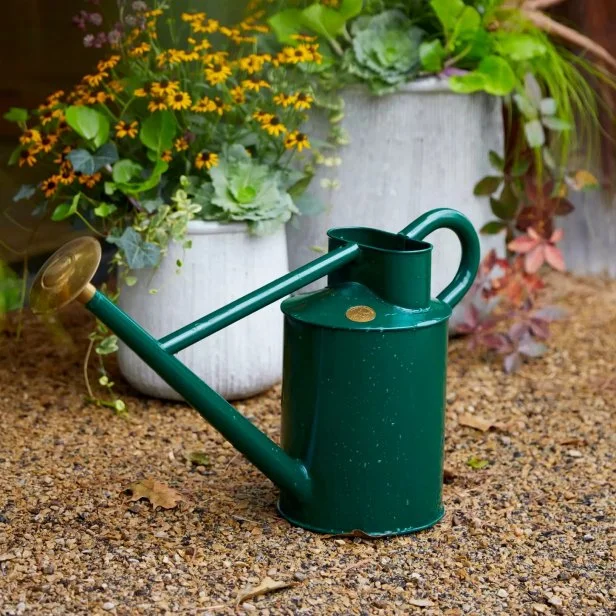
Choosing the Best Watering Can for Your Garden
Different Types of Watering Cans
Finding the best watering can for your gardening needs involves looking at various types. Material, size, and spout design are key factors to consider. Let’s delve into these aspects to help you make an informed decision.
Materials and Durability
Watering cans come in different materials. Each offers unique benefits and durability levels. Plastic cans are lightweight and cost-effective. They work well for indoor and light outdoor use. Metal cans, often made from galvanized steel, are sturdier. They withstand harsh weather and heavy-duty work. Look for rust-resistant coatings to ensure longevity. Stainless steel is another durable option that resists corrosion.
Capacity and Size
Capacity plays a huge role in choosing the best watering can. Smaller gardens do well with cans of 1 to 2 gallons. Larger spaces may require cans that hold up to 3 gallons or more. Remember, a full large can becomes heavy. Test the weight to make sure it’s manageable for you. The size should balance well in your hand and feel comfortable during use.
Spout Design and Water Flow Control
The spout design affects water flow control. A long, narrow spout offers precision to water small potted plants or seedlings. Detachable spouts or those with adjustable nozzles work well for different tasks. Choose a watering can with a spout that suits your garden’s needs. Avoid spouts that drip or leak to ensure efficient watering.
Factors to Consider When Selecting a Watering Can
Choosing the best watering can requires careful consideration of your garden’s unique requirements. Here are some key factors to keep in mind:
The Size of Your Garden Space
The size of your garden greatly impacts your choice. Small spaces benefit from smaller cans. They’re easy to maneuver and store. In contrast, large gardens might need cans with bigger capacities. This helps avoid frequent refills. But keep in mind, a bigger can means more weight to carry.
Plant Types and Watering Needs
Consider the types of plants you’re tending. Delicate flowers or seedlings need gentle watering. Choose cans with a fine rose attachment for this. Vegetables or larger plants may need more water. A can with a higher flow rate works better in this case. Make sure the watering can you select caters to the various needs of your plants.
Ergonomic Design and Comfort
Comfort is crucial when watering your garden. An ergonomic design helps prevent strain on your hands and back. Look for a can with a comfortable grip and balance. It should not be too heavy when full and should allow for natural posture while watering. This makes your gardening tasks more enjoyable and less tiresome.
Key Features of a High-Quality Watering Can
When selecting the best watering can for your garden, assess key features. These attributes ensure a can’s value and efficiency. Let’s examine essential features to look out for.
Leak Proof Construction
A high-quality watering can must have a leak-proof design. This prevents water loss and ensures proper delivery to your plants. Leak-proofing also saves time, as you avoid constant refills. Make a habit of checking for any holes or cracks before purchasing.
Balance and Handle Comfort
The handle should feel good in your hand, giving you control and balance. This comfort matters for easy watering, especially when the can is full. A well-designed handle reduces wrist strain. Pick a can that remains stable when set down and when you carry it around.
UV-Resistant Material and Longevity
UV-resistant materials are crucial for garden tools. Exposure to sunlight degrades some materials over time. UV-resistant watering cans maintain their integrity for years. This feature is particularly important for plastic cans that stay outdoors. Look for materials that can withstand the elements and frequent use.
Advantages of Metal vs. Plastic Watering Cans
When choosing the best watering can, the material is a crucial factor to weigh. Metal and plastic cans each have unique advantages that suit different gardening scenarios.
Pros and Cons of Metal Watering Cans
Metal watering cans often favor longevity and toughness. They are reliable for heavy-duty tasks and withstand rough handling. Most metal cans, especially those made from galvanized steel, resist rust. They offer a classic look that some gardeners prefer. On the down side, metal cans can be heavy, especially when full. This may make watering more taxing on your body. They can also dent if dropped and may be pricier than their plastic counterparts.
Pros and Cons of Plastic Watering Cans
Plastic watering cans shine in weight and cost-effectiveness. They are light, which makes them easier to carry and maneuver. This is great for gardeners who find heavy lifting a challenge. Plastic is ideal for quick, light tasks and generally costs less than metal. However, durability can be a concern. Plastic can degrade when exposed to the sun for long periods. It may crack in cold weather or when mishandled. While plastic cans offer a range of colors and designs, they might not match the durability and aesthetic of metal.
Innovative Watering Can Designs
Gardening has evolved, and so have the tools we use. Recent years have seen innovative designs in watering cans. They make watering more efficient and storage simpler. Below, we explore some of the latest designs in the market.
Collapsible Watering Cans
Collapsible watering cans are perfect for those with limited space. They are great for small apartments or for gardeners who need to transport their tools. These cans collapse to a fraction of their size when not in use. Most are made of durable, flexible materials like silicone. This makes them light, easy to store, and resistant to damage from dropping. When filled, they expand to accommodate a substantial amount of water, making them both practical and portable.
Automated and Self-Watering Cans
For those seeking convenience, automated and self-watering cans are a game changer. These advanced watering cans can help you save time. They water your plants on a schedule or when moisture levels drop. Some models connect to a water supply and use sensors to regulate watering. These cans are ideal for busy gardeners or for caring for plants when you are away. They help ensure that plants receive consistent moisture, which is key to their health.
Maintaining Your Watering Can
Proper maintenance ensures your watering can lasts longer and performs better.
Cleaning and Storage Tips
To keep the best garden can in great shape, follow these simple steps:
- Rinse after use: Prevent sediment build-up by rinsing your can with clean water.
- Dry thoroughly: After rinsing, empty the can and let it air dry to prevent mold.
- Store properly: Protect it from weather. Store indoors or in a shaded, dry area.
- Occasional deep clean: Use mild soap and water for a detailed cleaning yearly.
Remember to check for debris in the spout that could block water flow.
Replacing Parts and Rust Prevention
When parts wear out, replace them to extend your watering can’s life:
- Inspect seals and washers: They prevent leaks and should stay in good condition.
- Check the rose and spout: If they get damaged or clog, find suitable replacements.
- Rust prevention for metal cans: Apply rust-resistant coatings regularly.
- Keep joints and hinges oiled: This ensures smooth movement and prevents rust.
By following these guidelines, your watering can will remain functional and reliable for your gardening tasks.
Where to Buy the Best Watering Cans
Finding the best garden can might take you to various shopping venues. Let’s look at where to start your search.
Local Garden Centers versus Online Shops
Local garden centers are a treasure trove for gardeners. Here, you can pick up the best watering can and get expert advice. Staff often know their products well and can guide your choice. Plus, you see and feel the cans firsthand. Testing the balance and handle comfort is much easier this way. But, local stores may have a limited range. Prices can be higher compared to online shops.
Online shopping offers convenience and a vast selection. You can compare different watering cans quickly. Deals are easier to find, and reviews are just a click away. But you can’t physically inspect the products. There’s also the wait for delivery and the risk of shipping damage.
Choose based on your needs. If you value hands-on shopping, visit a local center. If variety and deals are your priority, online shops could be better.
Reviews and Recommendations
Reviews are valuable when selecting the best watering can. They offer real-world usage insights. Look for products with plenty of positive feedback. Sites like Amazon, Gardeners’ World, and Trustpilot are good places to start. Gardening forums and social media groups are also helpful for honest recommendations.
Don’t overlook word-of-mouth suggestions. Friends or family with gardening experience can point you to top picks. Armed with these tips, you’ll be set to find the best watering can for your garden’s needs.
